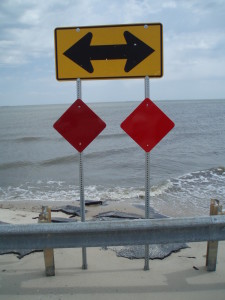We have much more to do and your continued support is needed now more than ever.
Top 10 Ways the “Fiscal Cliff” Will Harm Wildlife Refuges
Hanging over the celebrations of Thanksgiving this year is the threat of severe funding cuts from the fast approaching “Fiscal Cliff.” The National Wildlife Refuge System – the largest system of lands and waters protected for wildlife – faces a 10 to 20% cut to current funding, totaling approximately $50 – $100 million – but the overall economic impact would be much more.
A report released today by the Cooperative Alliance for Refuge Enhancement (CARE), a diverse coalition of sporting, conservation and scientific organizations representing 15 million Americans, warns that unless Congress abandons the automatic “sequestration” cuts scheduled to occur in January, the Refuge System could be forced to close refuges and eliminate popular recreational opportunities which many communities depend upon as economic drivers.

- Closed refuges and visitor centers;
- Loss of hunting and fishing opportunities;
- Volunteers turned away;
- Lost revenue to local economies;
- Increased poaching, vandalism and drug smuggling;
- Lost opportunities for birding and wildlife watching;
- Spread of invasive species;
- Halted habitat restoration and fire management;
- Delayed response to natural disaster devastation; and
- Terminating a newly initiated inventory and monitoring program.
Already we are seeing wildlife refuges struggle to keep up with existing challenges, such as sea level rise and damage from extreme weather as a result of climate change (check out this story from the Washington Post on how Hurricane Sandy wreaked havoc on East Coast refuges). Any further cuts will leave refuge managers with hard decisions and no-win scenarios. Refuges aren’t alone: the conservation of wildlife and America’s public lands in general (including National Parks) is at risk.
Banking on Refuges
Wildlife refuges don’t just provide habitat for migratory birds or endangered species: they are drivers for our economy.
“The 560 national wildlife refuges that make up the 150-million-acre Refuge System generate more than $4.2 billion annually for local economies and create nearly 35,000 U.S. jobs annually.” says David Houghton, President of the National Wildlife Refuge Association and Chair of the CARE coalition.
Connecting People to Nature
Much of this economic activity is generated by the refuge system’s nearly 45 million visitors each year. Activities like wildlife-watching, hunting, fishing, photography, hiking, canoeing, kayaking, and environmental education programs may be curtailed if America’s refuges go over the Fiscal Cliff. As Larry Schweiger, National Wildlife Federation’s President & CEO, gave a sense of urgency to the sequestration situation after the CARE report was released:
“Wildlife refuges give Americans fantastic opportunities to get outside and connect with nature as well as providing critical habitat for wildlife, which is vital in a warming world. Continued investment in our refuges will also drive our recreation economy through activities like hunting and fishing. The CARE coalition’s Fiscal Cliff report details the potentially devastating consequences to America’s wildlife refuges if our elected leaders do not put aside differences and agree on a budget solution. It’s critical that we all work together to conserve and protect wildlife for future generations.”
![]()
You can make a difference to help prevent the budget crisis from devastating wildlife and our shared National Wildlife Refuge System by clicking on the link and sending a message to your elected official now.
To learn more about the sequestration process AND look at adorable wildlife photos at the same time, check out this blog post in which wildlife complain about the fiscal cliff budget cuts: http://bit.ly/T5qywI





















